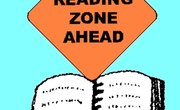Just as there are different personality types in humans, there are also different learning styles. Each person's brain processes information in slightly different ways. Recognizing these differences affords children best education possible. Outlined here are the four recognized learning styles.
Spatial and Visual
Spatial and visual learning employs the use of board games, flash cards and picture association. Drawing a picture to describe a story just heard is an example of a spacial and visual lesson.
Tactile and Kinetic
Tactile and kinetic learning style integrates physical movement and activity into the learning process. Spelling with the arms, or acting out a story for comprehension are two examples of Tactile and kinetic learning.
Auditory
Auditory learners learn by hearing the information. Tools used in auditory learning style include books on tape, memory and trivia games. These students enjoy listening at story time, and excel at oral lessons.
Logical
The logical learner needs to analyze information. Tactics of logical learning include using word puzzles, problem solving exercises, synopsis writing and abstract questioning.
Combination Learners
Some learners may not fit exactly into any of the four main styles of learning. Commonly learners are a combination of audio as well as spatial and visual. These children need to see the information as they hear it.
Integrated Learning
Using a combination of tools from each learning style is known as integrated learning. This allows all learners to benefit equally from all lessons.
Related Articles
References
Writer Bio
Sidney Johns began her writing career in 1993 after moving to Florida. The former teacher and surgical technician worked in the home improvement industry prior to earning a Bachelor of Science in education from Indiana University. While on hiatus in 2004, Johns studied holistic healing and organic growth and gardening.










